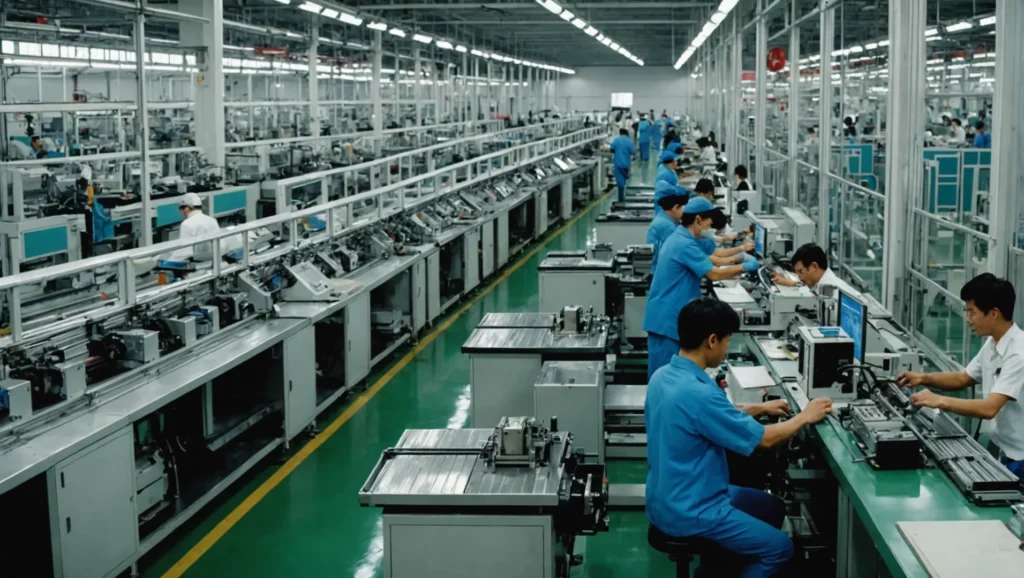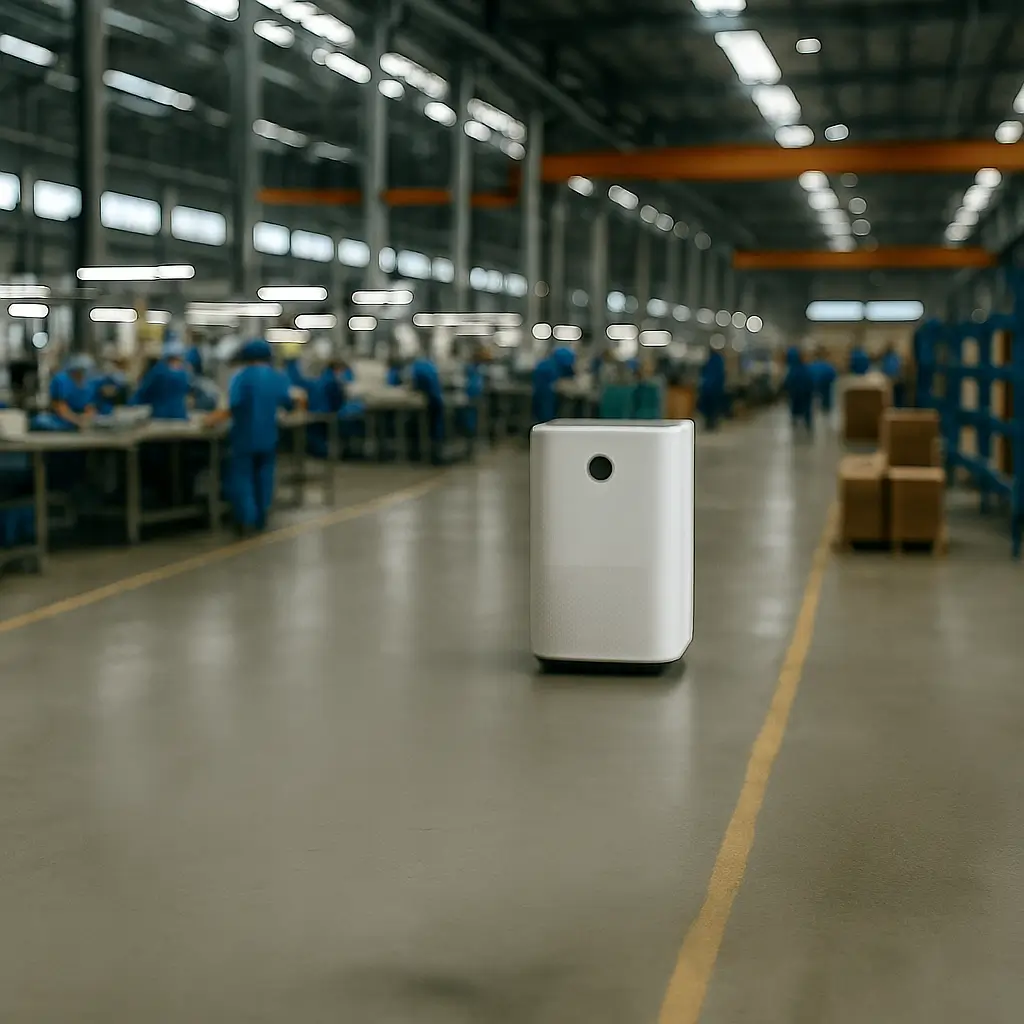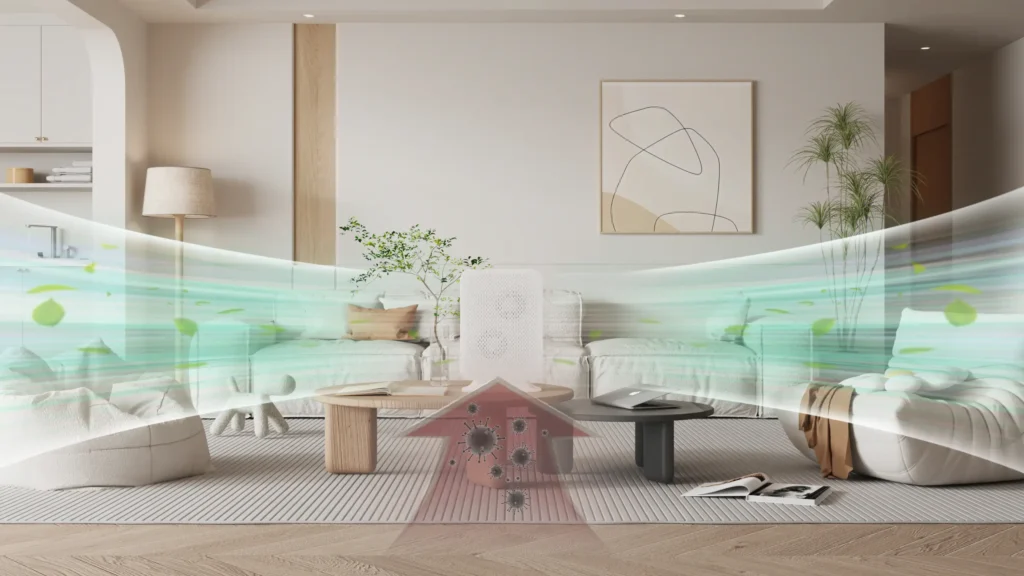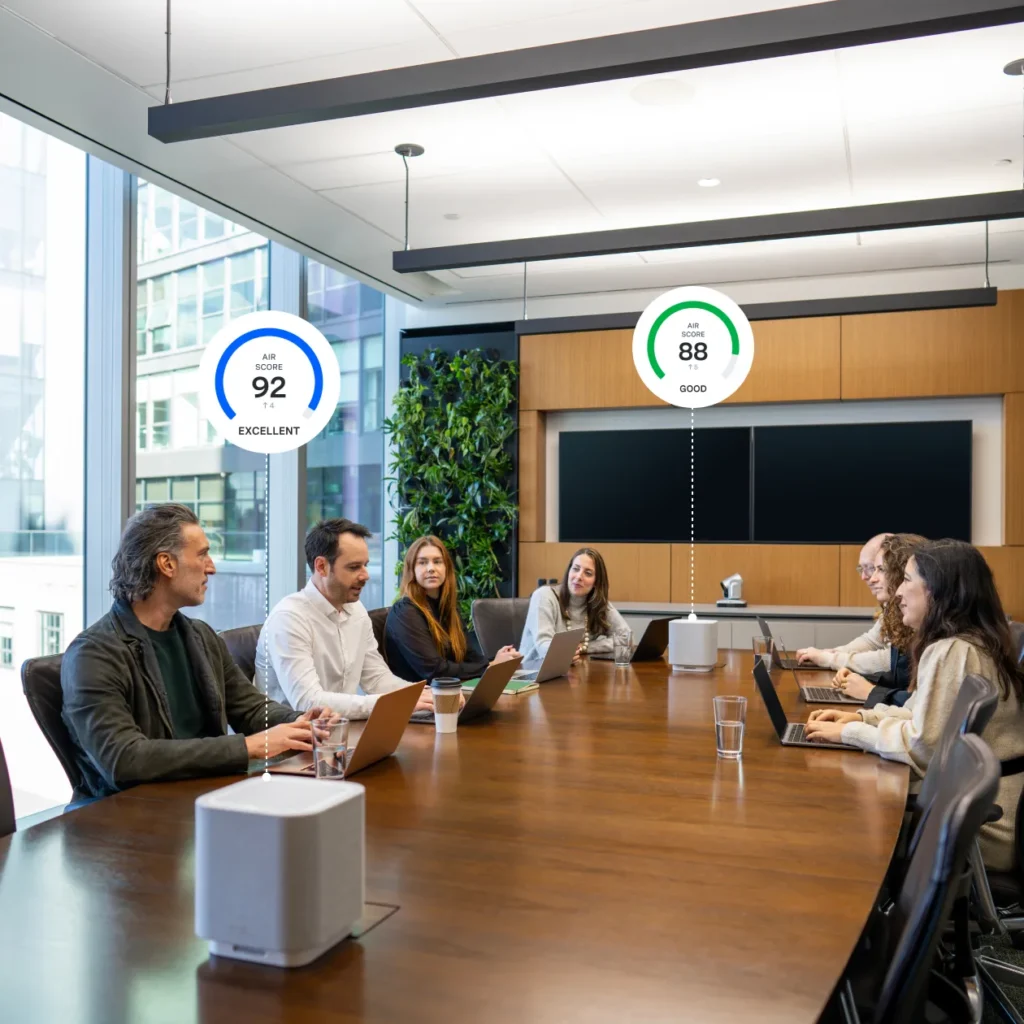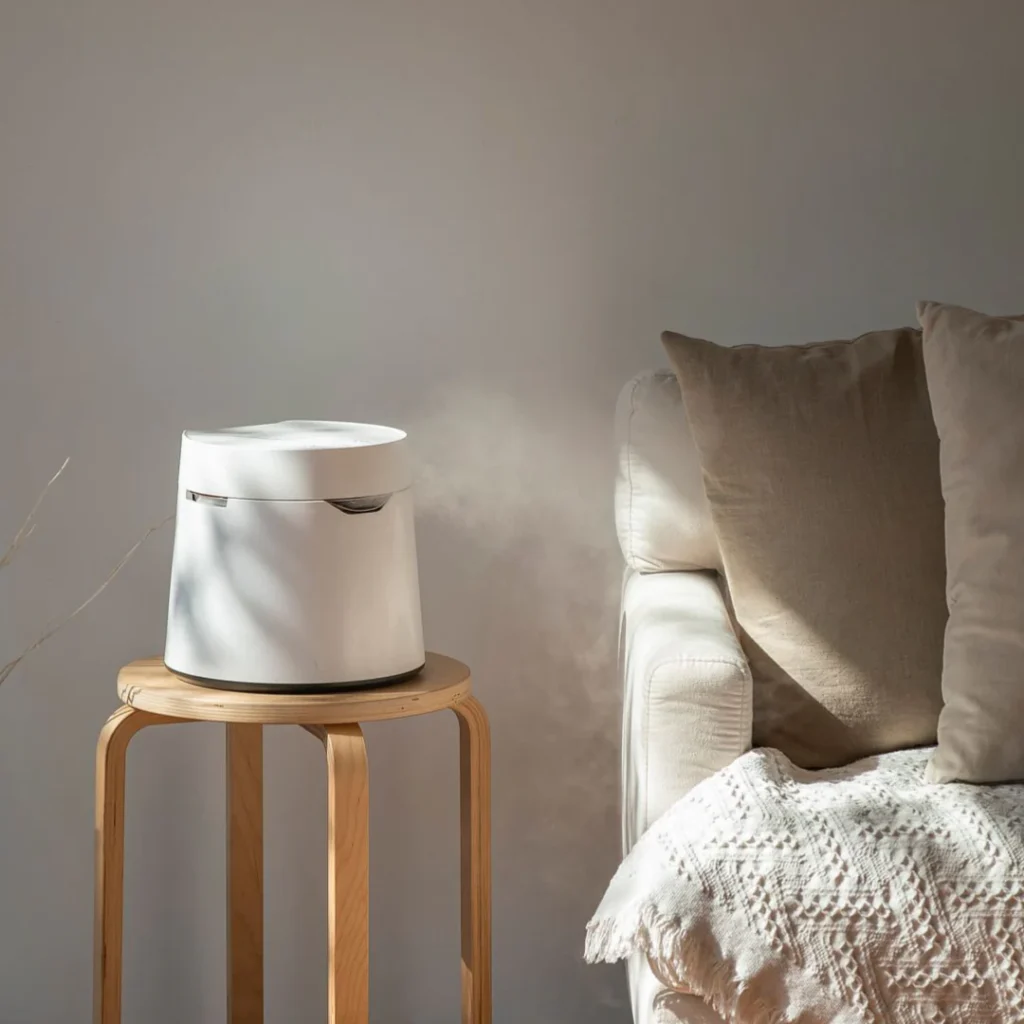
Se frayer un chemin à travers les règles détaillées de l'OSHA concernant les purificateurs d'air professionnels ressemble à la résolution d'un grand puzzle.
Pour s'assurer que les purificateurs d'air répondent aux normes OSHA pour les projets commerciaux, il est essentiel d'évaluer leurs indicateurs de performance, les exigences de sécurité et les procédures d'entretien. Il s'agit notamment de s'assurer que l'efficacité de la purification, les niveaux de bruit et les dispositifs de sécurité sont conformes aux réglementations nationales.
Cela permet d'acquérir une compréhension de base. Étudiez chaque partie plus en détail pour obtenir une clarté totale sur la manière de parvenir à une conformité complète. Approfondissez vos recherches pour trouver des actions détaillées, des pratiques exemplaires et des points de vue d'experts qui faciliteront probablement votre mise en conformité.
Les purificateurs d'air doivent être équipés de filtres HEPA pour répondre aux normes OSHA.Faux
L'OSHA ne demande pas directement l'utilisation de filtres HEPA ; elle se concentre sur la propreté générale de l'air.
Quels sont les principaux indicateurs de performance des purificateurs d'air commerciaux ?
Il est essentiel de connaître les mesures importantes pour les purificateurs d'air commerciaux afin d'obtenir une excellente qualité de l'air.
Les principaux indicateurs de performance des purificateurs d'air commerciaux comprennent l'efficacité de la purification, les niveaux de bruit et le volume d'air. Ces indicateurs ont un impact direct sur l'efficacité des purificateurs d'air à améliorer la qualité de l'air dans les locaux commerciaux.

Comprendre l'efficacité de la purification
L'efficacité de la purification est l'un des aspects les plus cruciaux de la gestion des déchets. indicateurs de performance1 pour les purificateurs d'air commerciaux. Il s'agit de la capacité de l'appareil à éliminer les contaminants de l'air, tels que la poussière, le pollen et d'autres particules en suspension dans l'air. Une efficacité de purification élevée garantit que le purificateur d'air réduit efficacement la pollution de l'air intérieur, ce qui est vital dans les environnements commerciaux où la qualité de l'air peut avoir un impact significatif sur la santé et la productivité.
Comment le mesurer :
- Taux de distribution d'air pur (CADR): Ce paramètre indique le volume d'air filtré délivré par le purificateur, mesuré en pieds cubes par minute (CFM). Plus élevé CADR suggèrent une meilleure performance.
- Technologie du filtre : Le type de filtre utilisé, comme le filtre HEPA ou le filtre à charbon actif, influe également sur l'efficacité.
Évaluation des niveaux de bruit
Le niveau de bruit est un élément important à prendre en compte, en particulier dans les bureaux ou les restaurants où un bruit excessif peut être dérangeant. Les purificateurs d'air commerciaux doivent maintenir un équilibre entre les performances et le silence de fonctionnement.
Facteurs influençant les niveaux de bruit :
- Vitesse du ventilateur : Des vitesses plus élevées sont généralement synonymes de plus de bruit. Recherchez des modèles à vitesse variable.
- Conception : La conception générale et la qualité de la construction peuvent également contribuer à la réduction du bruit.
Évaluation de la capacité du volume d'air
La capacité du volume d'air, souvent liée à la CADRindique la quantité d'air que le purificateur peut traiter dans un laps de temps donné. Ceci est particulièrement important dans les grands espaces où une capacité plus élevée est nécessaire pour garantir que toutes les zones sont correctement purifiées.
| Modèle de purificateur | CADR (CFM) | Taille de la pièce recommandée |
|---|---|---|
| Modèle A | 300 | Jusqu'à 400 pieds carrés |
| Modèle B | 450 | Jusqu'à 600 pieds carrés |
Importance de l'entretien régulier
Bien qu'il ne s'agisse pas d'un indicateur direct de performance, un entretien régulier permet aux purificateurs d'air de continuer à fonctionner de manière optimale. Il s'agit notamment de changer les filtres et de nettoyer les composants conformément aux directives du fabricant.
Pour une compréhension globale de l'interaction de ces indicateurs et de leurs implications sur le développement durable, il est nécessaire d'avoir une vision globale de l'évolution de la situation. qualité de l'air2Pour cela, pensez à consulter les avis d'experts et à effectuer des comparaisons détaillées des produits.
Les filtres HEPA sont les plus efficaces pour la purification de l'air.Vrai
Les filtres HEPA retiennent 99,97% des particules, améliorant ainsi la qualité de l'air.
Des vitesses de ventilateur plus élevées réduisent les niveaux de bruit des purificateurs d'air.Faux
Des vitesses de ventilateur plus élevées augmentent le bruit ; des réglages différents le réduisent.
Comment les exigences de sécurité influencent-elles la conception des purificateurs d'air ?
Les règles de sécurité influencent grandement la manière dont les purificateurs d'air sont créés. Cela permet d'assurer la sécurité des utilisateurs et de garantir la fiabilité du produit.
Les exigences de sécurité ont un impact sur la conception des purificateurs d'air en dictant la sécurité électrique, le choix des matériaux et les caractéristiques opérationnelles afin de prévenir les accidents et de garantir la conformité aux normes nationales.
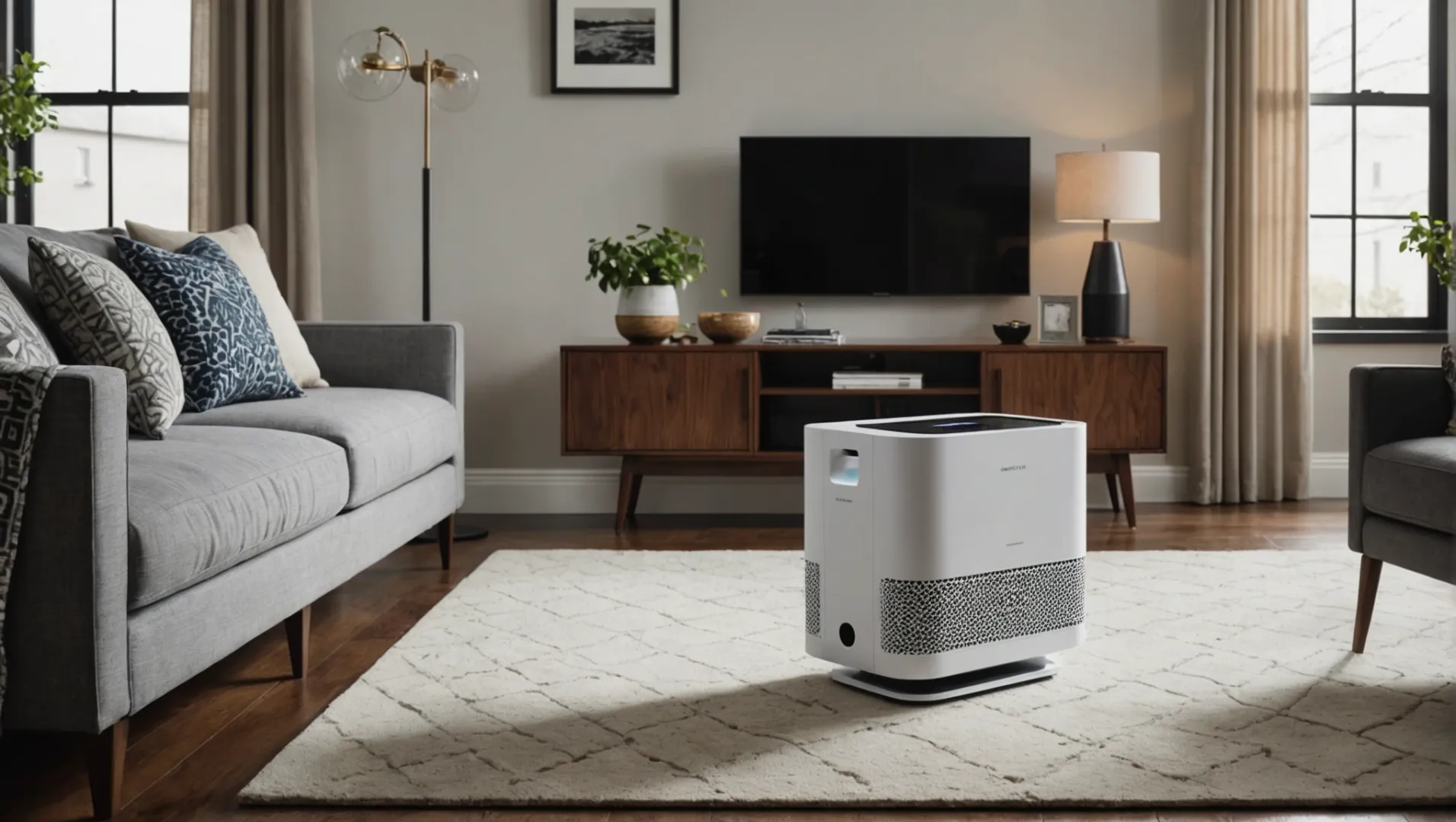
Comprendre la sécurité électrique
La sécurité électrique est très importante dans conception d'un purificateur d'air3. Les purificateurs d'air fonctionnent en continu, souvent pendant des semaines, ce qui nécessite des pièces électriques robustes. Les concepteurs doivent isoler et mettre à la terre tous les circuits électriques pour éviter les courts-circuits ou les incendies. Le respect des règles de sécurité nationales et internationales, telles que la norme IEC 60335, montre aux utilisateurs que le produit est digne de confiance.
Choix des matériaux et durabilité
Les matériaux utilisés dans les purificateurs d'air sont essentiels pour la sécurité. Les fabricants ont besoin de matériaux à la fois solides et résistants au feu. Cette étape permet de réduire les risques d'incendie, en particulier dans les endroits où les machines fonctionnent toute la journée. De plus en plus de concepteurs choisissent désormais des matériaux respectueux de l'environnement afin d'atteindre les objectifs mondiaux en matière de développement durable.
Prévention des risques d'explosion
Dans certains endroits, les explosions de gaz ou de composés instables sont très préoccupantes. Les purificateurs d'air destinés à ces zones sont équipés de filtres et de capteurs spéciaux pour détecter et réduire ces risques. Les modèles antidéflagrants sont conformes à des normes telles que ATEX en Europe et NEC aux États-Unis.
Conformité réglementaire et essais
Les purificateurs d'air sont soumis à des tests stricts avant d'être commercialisés. Les tests portent sur le bruit, l'efficacité et les aspects liés à la sécurité. Les équipes de conception travaillent souvent avec des laboratoires tiers pour confirmer les normes telles que les marques UL, CE ou CSA. Comprendre les changements réglementaires permet d'assurer une conformité permanente.
Sécurité de l'utilisateur
Les purificateurs d'air modernes possèdent de nombreux dispositifs de sécurité pour l'utilisateur. Il peut s'agir d'un arrêt automatique en cas de surchauffe ou d'obstruction des filtres, de verrous pour enfants et d'alertes simples pour l'entretien. Chaque dispositif tente d'améliorer l'interaction avec l'utilisateur et de réduire les dangers potentiels.
En se concentrant sur ces besoins de sécurité, les fabricants établissent une relation de confiance avec les consommateurs et fabriquent des produits fiables et utiles. Ces éléments sont essentiels au processus de conception et déterminent le développement des purificateurs d'air.
La sécurité électrique est cruciale dans la conception des purificateurs d'air.Vrai
La sécurité électrique contribue au bon fonctionnement des purificateurs d'air et permet d'éviter les incendies.
Tous les purificateurs d'air utilisent des matériaux respectueux de l'environnement.Faux
Bien que certains purificateurs d'air utilisent des matériaux écologiques, ce n'est pas le cas de tous.
Quelles sont les pratiques d'entretien qui garantissent la conformité aux normes OSHA ?
Le respect des normes OSHA nécessite un entretien minutieux des purificateurs d'air commerciaux, afin de protéger à la fois les performances et la sécurité.
Les pratiques d'entretien régulier des purificateurs d'air doivent inclure le remplacement des filtres, l'inspection des systèmes et l'évaluation des performances afin de respecter les normes OSHA. Ces pratiques permettent de maintenir l'efficacité opérationnelle, de s'assurer que les dispositifs de sécurité sont intacts et d'éviter tout manquement à la conformité réglementaire.
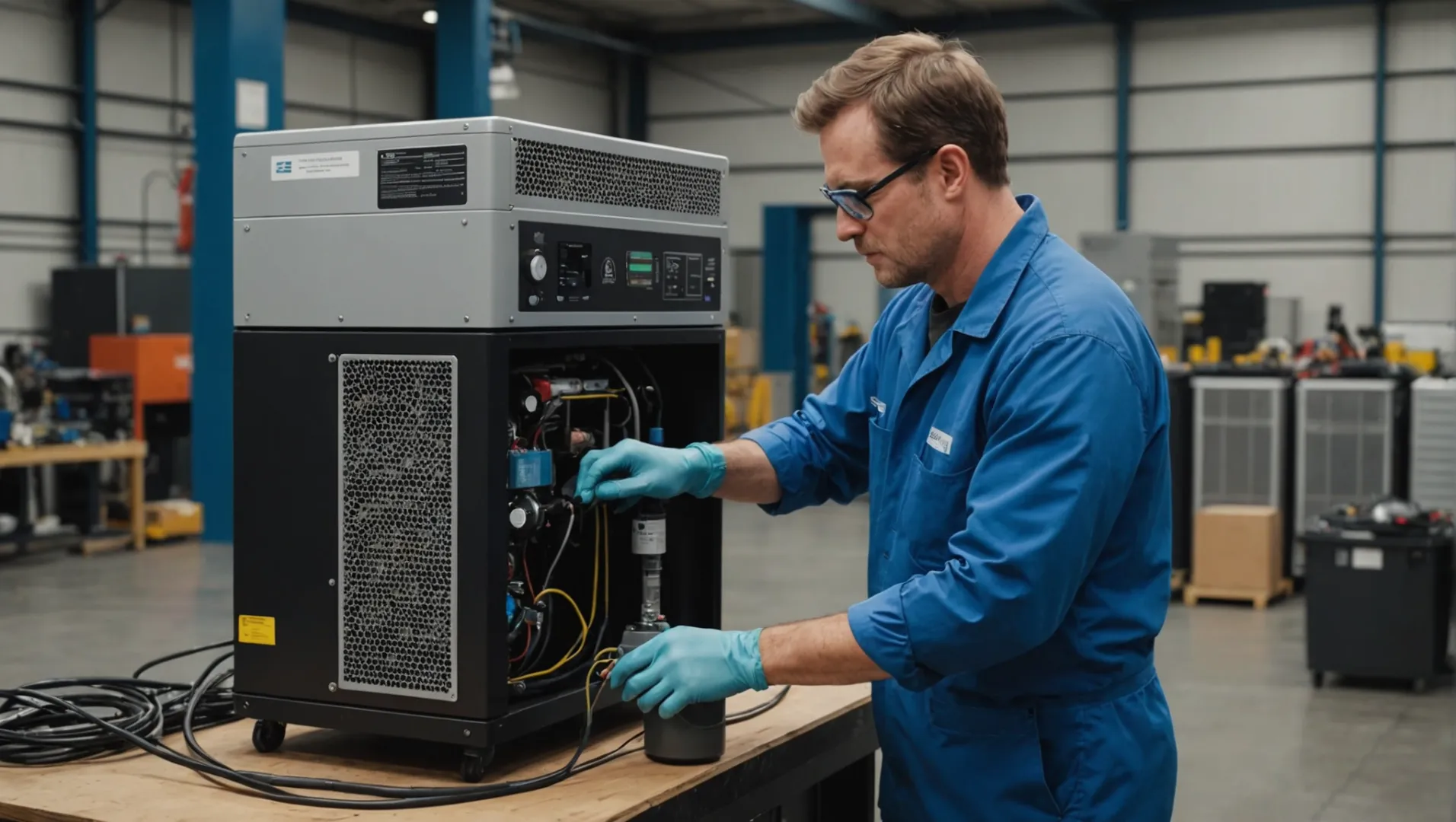
Comprendre les règles de l'OSHA pour l'entretien des purificateurs d'air
L'entretien des purificateurs d'air dans les entreprises nécessite le respect des règles de l'Occupational Safety and Health Administration (OSHA). Ces directives décrivent les pratiques essentielles pour garantir la sécurité et des performances optimales.
-
Changements réguliers des filtres : Les filtres doivent être vérifiés et remplacés conformément aux recommandations du fabricant. Cela permet de conserver un air pur et de garantir le bon fonctionnement du purificateur. Des filtres encrassés ou bloqués peuvent solliciter le système et entraîner des risques pour la sécurité.
-
Contrôles du système : Il est important de procéder à des contrôles réguliers. Inspectez les composants électriques pour prévenir les risques d'incendie et vous assurer que toutes les pièces fonctionnent correctement. Ces contrôles permettent d'identifier l'usure avant qu'elle ne devienne un problème important.
-
Contrôles de performance : Des évaluations régulières des performances permettent de maintenir l'efficacité de la purification conformément aux normes OSHA. Évaluez les paramètres tels que le débit d'air, la vitesse de nettoyage et les niveaux de bruit pour déterminer si le système fonctionne efficacement.
Documentation et conformité
La tenue de registres complets de toutes les activités de maintenance est essentielle pour démontrer la conformité.
-
Notes de maintenance : Documentez toutes les activités de maintenance, telles que les changements de filtres, les résultats des inspections et les réparations effectuées. Cette documentation est souvent exigée lors des audits OSHA.
-
Formation du personnel : Il est également très important de former le personnel qui travaille sur les purificateurs d'air. La formation doit porter sur les procédures de manipulation en toute sécurité, les protocoles de sécurité et les mesures d'urgence.
Erreurs de soins courantes et comment les éviter
Même avec un plan d'entretien solide, certaines erreurs peuvent compromettre la conformité :
-
Ignorer les petits problèmes : Les problèmes mineurs, tels que des bruits inhabituels ou de légères baisses de performance, doivent être traités rapidement. En les réglant rapidement, vous éviterez que des problèmes plus importants ne se développent.
-
Instructions du fabricant manquantes : Chaque purificateur peut avoir des exigences spécifiques en matière d'entretien qui doivent être respectées. Comprendre les instructions du fabricant4 est la clé de la conformité.
En respectant ces méthodes d'entretien et en évitant les erreurs courantes, les entreprises peuvent maintenir leurs purificateurs d'air en conformité avec les règles de l'OSHA, garantissant ainsi un fonctionnement sûr et efficace dans leurs espaces commerciaux.
Le remplacement régulier des filtres est obligatoire pour respecter les normes OSHA.Vrai
Les règles de l'OSHA nécessitent un entretien fréquent, comme le remplacement des filtres, pour des raisons de sécurité.
Ignorer les petits problèmes liés aux purificateurs d'air n'a pas d'incidence sur la conformité.Faux
Ignorer les petits problèmes risque de prendre de l'ampleur et de conduire à ne pas respecter les règles de l'OSHA.
Y a-t-il des pièges à éviter pour respecter les normes de qualité de l'air de l'OSHA ?
Respecter les règles de l'OSHA en matière de qualité de l'air peut s'avérer difficile. Évitez les erreurs suivantes pour réussir.
Les pièges les plus courants pour respecter les normes de qualité de l'air de l'OSHA sont la négligence de l'entretien régulier, une mauvaise compréhension des réglementations et un contrôle inadéquat des performances. Pour garantir la conformité, il faut une gestion proactive, le respect des directives actualisées et l'emploi d'un personnel compétent.
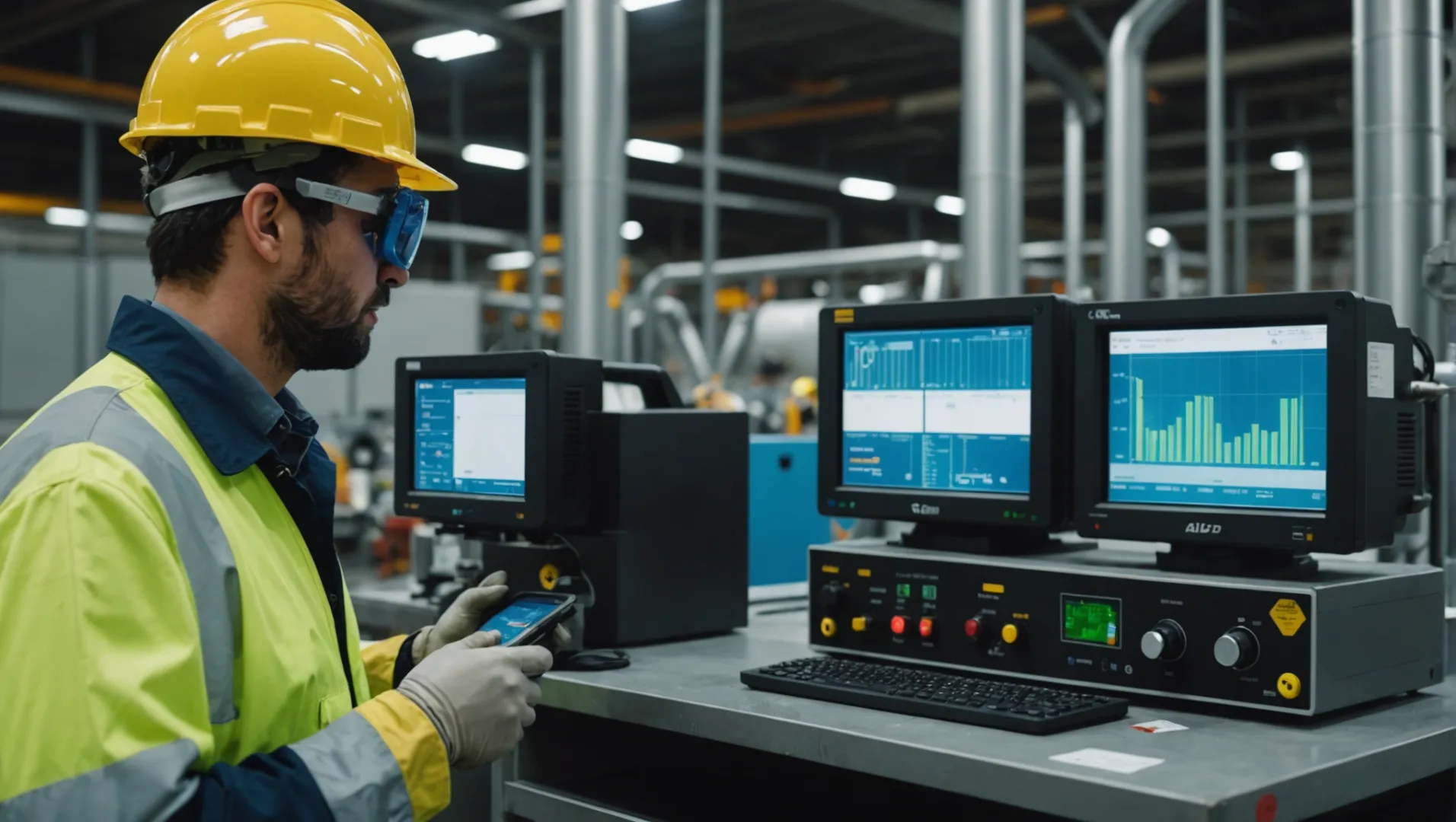
Incompréhension des règles de l'OSHA
L'un des écueils les plus fréquents auxquels les entreprises sont confrontées est une mauvaise compréhension de ce qu'est une entreprise. Réglementation OSHA5. Les entreprises supposent souvent que tous les purificateurs d'air répondent automatiquement à ces normes, ce qui n'est pas le cas. Il est essentiel de bien comprendre les exigences spécifiques, telles que les limites d'exposition admissibles (LEA) et les pratiques de sécurité recommandées, afin de sélectionner l'équipement approprié.
Ignorer l'entretien régulier
Ignorer l'entretien régulier est un autre problème courant. Les purificateurs d'air doivent être entretenus régulièrement pour rester efficaces et sûrs. Il s'agit notamment de changer les filtres, de nettoyer les pièces et de procéder à des inspections. Le non-respect d'un calendrier peut entraîner une baisse des performances et des problèmes potentiels.
| Tâche d'entretien | Fréquence |
|---|---|
| Changement de filtre | Tous les 3 à 6 mois |
| Nettoyage des pièces | Mensuel |
| Contrôles du système | Trimestrielle |
Contrôles de performance insuffisants
Le contrôle du fonctionnement des purificateurs d'air est essentiel pour respecter les règles de l'OSHA. Certaines entreprises omettent cette étape, ce qui entraîne des problèmes qui ne sont pas détectés à temps. Des tests réguliers, tels que des contrôles de la qualité de l'air, peuvent permettre de détecter rapidement les problèmes.
Embauche de travailleurs non qualifiés
Enfin, le recours à des travailleurs n'ayant pas les compétences requises peut nuire aux efforts de mise en conformité. Les travailleurs qui s'occupent des systèmes de qualité de l'air doivent être formés et connaître les règles de l'OSHA. Investir dans les programmes de formation6 améliore probablement les résultats en matière de conformité.
En comprenant ces erreurs courantes et en utilisant des stratégies pour les éviter, les entreprises peuvent s'assurer que leurs systèmes de qualité de l'air restent conformes aux normes de l'OSHA.
Un entretien régulier n'est pas nécessaire pour assurer la conformité à l'OSHA.Faux
Le fait d'ignorer l'entretien entraîne probablement une diminution des fonctions et une violation des règles.
Tous les purificateurs d'air sont automatiquement conformes aux normes OSHA.Faux
Croire que tous les purificateurs suivent des règles est une erreur typique.
Conclusion
Le respect des règles de l'OSHA crée un lieu de travail plus sûr. Concentrez-vous sur les performances, la sécurité et l'entretien pour améliorer la qualité de l'air et respecter les règles. Restez informé et prenez des initiatives.
-
Découvrez les méthodes permettant de mesurer avec précision l'efficacité de la purification : 1. Contrôleur de la qualité de l'air. Un contrôleur de la qualité de l'air intérieur est un moyen facile de vérifier que le purificateur d'air fait bien son travail. C'est aussi un ... ↩
-
Découvrez pourquoi il est essentiel de maintenir une qualité de l'air optimale.. : Ce guide est destiné à aider les personnes qui travaillent dans des immeubles de bureaux à se familiariser avec les facteurs qui contribuent aux problèmes de qualité de l'air intérieur et de confort. ↩
-
Découvrez comment les normes de sécurité électrique garantissent un fonctionnement fiable des purificateurs d'air.. : Bien que la plupart des appareils électriques soient conçus pour assurer la sécurité de l'utilisateur, certains peuvent involontairement dégrader la qualité de l'air intérieur. Un classique ... ↩
-
Apprenez les étapes précises de l'entretien directement auprès des fabricants pour garantir la conformité.. : Les filtres à air des bâtiments commerciaux et publics doivent être inspectés régulièrement pour vérifier qu'ils ne sont pas endommagés, qu'ils ne contiennent pas de débris et qu'ils ne sont pas étanches. La zone autour du ... ↩
-
Comprendre les principales réglementations de l'OSHA en matière de qualité de l'air pour la mise en conformité.. : Une bonne ventilation et un bon entretien des bâtiments peuvent prévenir et résoudre les problèmes de QAI. Bien que l'OSHA n'ait pas de normes en matière de QAI, elle a des normes en matière de ventilation ... ↩
-
Découvrez des programmes de formation efficaces pour améliorer les compétences en matière de conformité OSHA.. : Fournisseurs de formation en ligne autorisés par l'OSHA - 360Training (OSHAcampus) - AdvanceOnline - CareerSafe (Youth Focus) - ClickSafety - HSI (Summit Training Source) ... ↩



